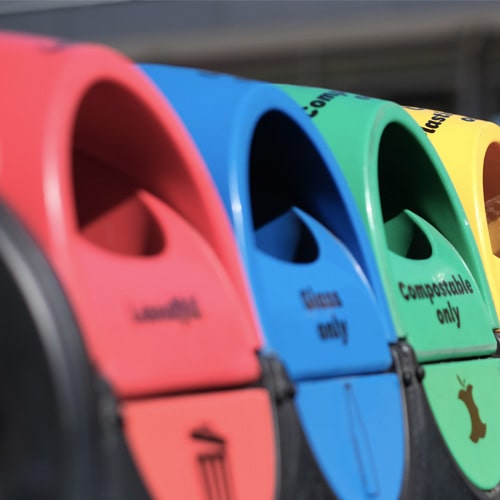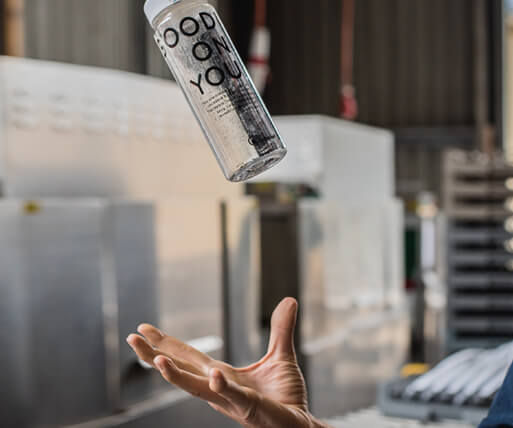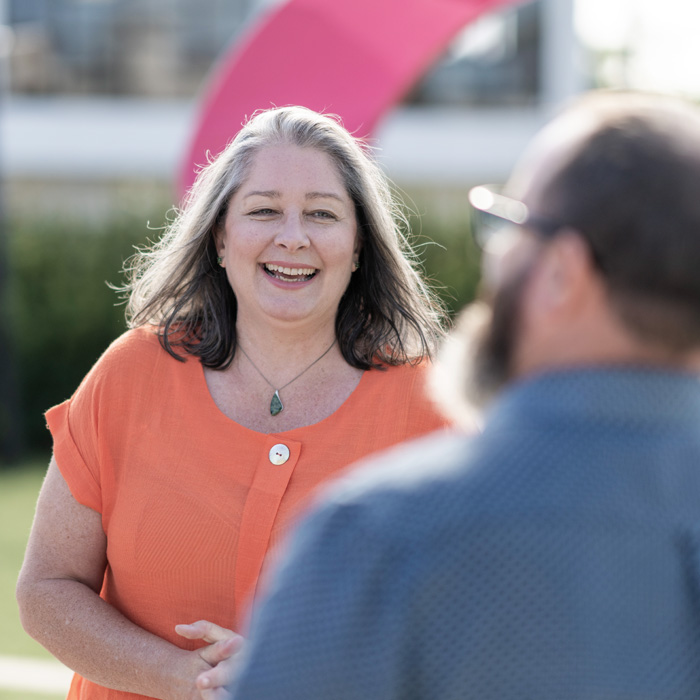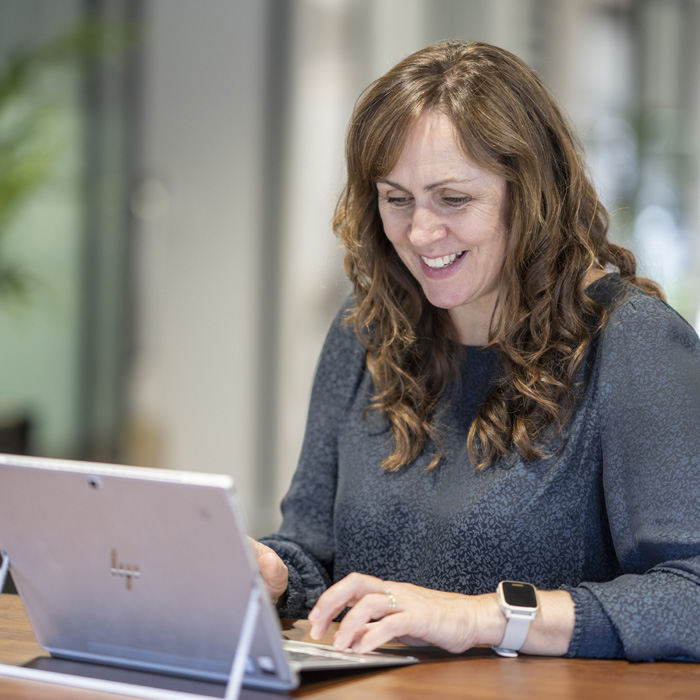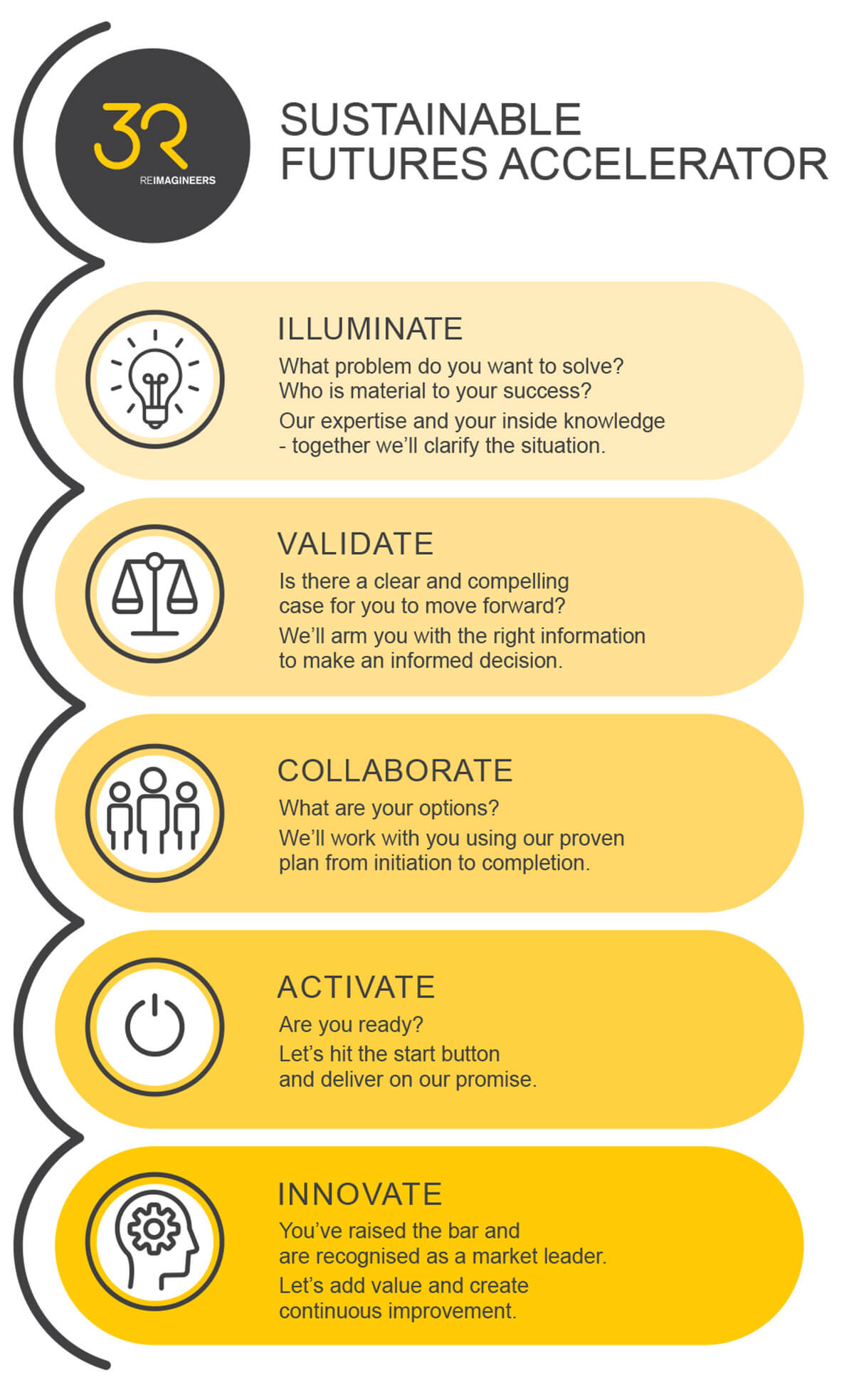Inspiration from recent waste minimisation conference
We were proud to win best stand at the 2024 WasteMINZ Conference.
The recent WasteMINZ Conference once again proved to be a highlight in the resource recovery sector calendar. Four of our reimagineers attended to present on tyres and large battery stewardship, and our R&D work, as well as to learn. Here are their key takeaways:
Kiri Speirs, Marketing Manager
Tackling construction and demolition (C&D) waste
This year’s WasteMINZ conference was heartening. It felt like a lot of momentum and action is building around a range of topics.
C&D waste, which makes up around half of our waste in landfills, was one hot topic. Geoff Gibson of Heretaunga Hastings District Council spoke in the Built Environment session about the traction being gained through sector collaboration.
Construction firm Naylor Love and Auckland Council spoke about their partnership to sort and manage waste on a large building site, and the course they have developed for those in the industry from it.
Mark Roberts from Auckland Council provided a snapshot of a three-bedroom, two-bathroom house build that generated an eye-watering 3.6 tonnes of waste. That’s before the outdoor work that generated another huge amount of avoidable concrete rubble. The design phase is where a lot of this waste could have been avoided.
It was good to hear the Minister for the Environment Penny Simmonds indicate infrastructure to sort and reduce construction waste would be a priority for the Waste Minimisation Fund.
Reusable packaging systems ready to go
Two exhibitors had ready-to-go solutions for reusable packaging. TOMRA displayed a machine that could collect a range of reusable coffee cups coupled with a software system to manage deposits and refunds on them. The system is popping up and gaining traction in some European towns and cities.
An NZ-grown system for reusables by Again Again is particularly focused on cutting down waste at events. It’s compatible with any range of cups and serveware. Founder Nada Piatek has plenty of learnings to share from the company’s journey so far to help make the system a success for event holders.
Product stewardship progresses
There were updates on the progress of three of the mandatory schemes for priority products (Tyrewise, large batteries, and single-use plastic packaging), as well as a presentation on the small battery scheme, B-cycle in Australia. This too was supported by the Minister’s speech, which indicated the government is still keen to look at replacing the Waste Minimisation Act 2008 and Litter Act 1979. It’s envisioned that new legislation would better support a range of mandatory product stewardship or extended producer responsibility initiatives as we see in places like Europe.
From little things big things grow
Some of the projects presented in the Snapshots session were the most inspiring.
The Aotearoa Composters Network has a mantra of quality over quantity and a focus on regional resilience. It’s made up of a range of organisations from small community composters to larger commercial operations, on-farm solutions and big worm farms. Their passion is bringing their communities along with them.
In the Waipā district a pilot project installed gardens with built-in worm farms on the berms of suburban streets. It got neighbours talking and sparked great conversations.
In Taranaki a circular stationery pilot project diverted over 1800 reusable stationery items from landfill, saving families money. It was sparked by one woman’s realisation that the required stationery list for a single child cost $115 to buy new, while partly used stationery was making its way to landfill. Some families shed tears at being able to get the needs of their tamariki sorted affordably.
Seeking answers in te ao Māori
A real highlight of the conference for me was a keynote presentation from L’Rey Renata, a self-described engineer by day and PhD student by night. She has been working on how ao Māori views of the world can influence how we think about concepts like the waste hierarchy.
Her emphasis on our connection to the whenua that sustains us is something that resonates deeply with me and moves the waste hierarchy from a set of practical steps, into the core of why we should care about taking them. Encouragingly, her research also shows there is a strong desire by New Zealand organisations to increase their knowledge and understanding of ao Māori and bring its influence into their thinking.
Gemma Burnside, Product Innovation Engineer
There were many opportunities to hear about new ideas, concepts, and ways of working.
Growing innovation
A talk on how to foster innovation gave some great advice. In a meeting, brainstorm, or workshop, you need three things; diversity (a variety of people in the room with different backgrounds), enthusiasm (a young un-jaded graduate), and mandate (the person with authority who can make the decision/change).
Waste reduction
It was good to see the construction industry working towards better resource recovery, like Naylor Love offering a course to be a qualified resource sorter in construction.
I also enjoyed L’Ray Renata’s talk on incorporate a Māori world view into the waste hierarchy. There’s an opportunity for 3R to incorporate some of this thinking into our Sustainable Futures Accelerator process so that we can inspire more diverging concepts and ideas.
Steve Nicholls, Innovation Projects Lead
The conference closed with keynote speaker Rod Carr, who spoke about our need to scale, and make things to happen quickly. This put a different slant on my takeaways from some of the earlier presentations I had watched.
Many of them were amazing, small, grassroots initiatives happening around things like food waste, composting, rubbish collection, and even reusing stationary, and I was blown away by the passion and achievements some of the programmes had achieved. A lot of the time they depended on volunteers, or people working at home with their families on projects in their spare time.
The challenge is how the broader resource recovery industry can contribute to taking small, passionate projects scattered around the country and help scale them quickly.
The impact of apathy
It was interesting, if disheartening, to hear about the challenge the waste sector faces by continuously pushing for behavioural change in the face of public apathy. TOMRA are working on making reusables work by essentially taking people out of the equation to make their system human-proof.
Behaviour change is challenging, but solutions which use automation to make sustainable choices more convenient could be a way around this.
It’s clear we can’t wait for government legislation to drive this change. Businesses and whole industries need to create it and take the future in our own hands.
Dominic Salmon, Business Development Manager – Sustainable Solutions
The conference provides a superb opportunity to meet in person and advance projects and conversations face-to-face.
I was particularly interested by the Minister for the Environment’s speech. She’s currently working on the Ministry’s waste work programme and we can expect an announcement soon. This includes a review of existing legislation and I look forward to hearing more.
Data is still king
Data is something we at 3R are very big on, and from talking to a wide variety of waste industry members it’s clear data is still a key focus. The old saying that you can’t manage what you don’t measure is especially true when it comes to waste, so it was good to see data is still at front of mind.
Repairability
My favourite presenter was Dr Paul Smith. He’s a leading voice in the Aotearoa repairability movement and advocates for a right to repair and a change to the broken system that sees too many “durable” products sent to landfill.
Paul spoke about how the term “durable goods” has become a contradiction. With products we expect to last often failing or becoming outdated, or undesirable too soon.
Repair is usually too difficult or expensive, upgrades are rarely an option, and new replacements are viewed as the logical option. When “durable goods” get thrown away, the energy and resources embedded in them are wasted. It heats up our climate and costs us all in the pocket.
Paul knows the future will be one of product custodianship – where we cherish and value the products we use – but we need to alter the system to get there. As he says, “We need product design that embraces repair and durability if we’re to create a sustainable, circular economy.”

